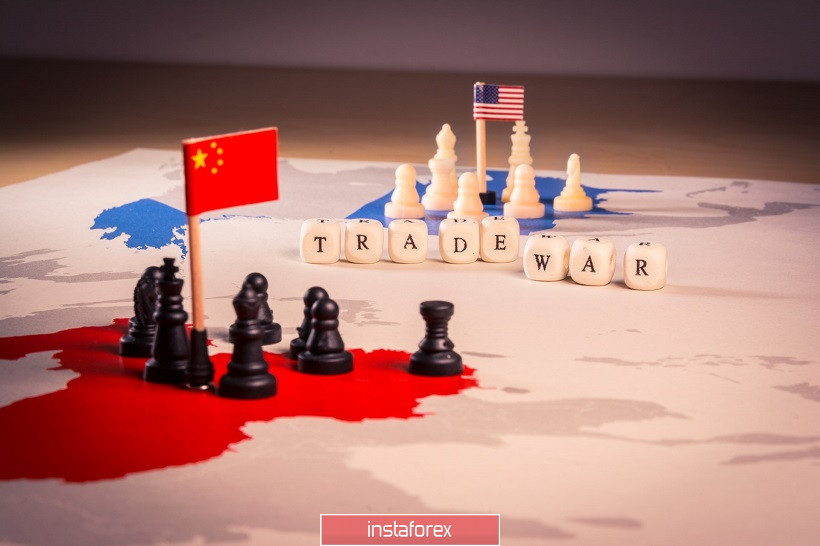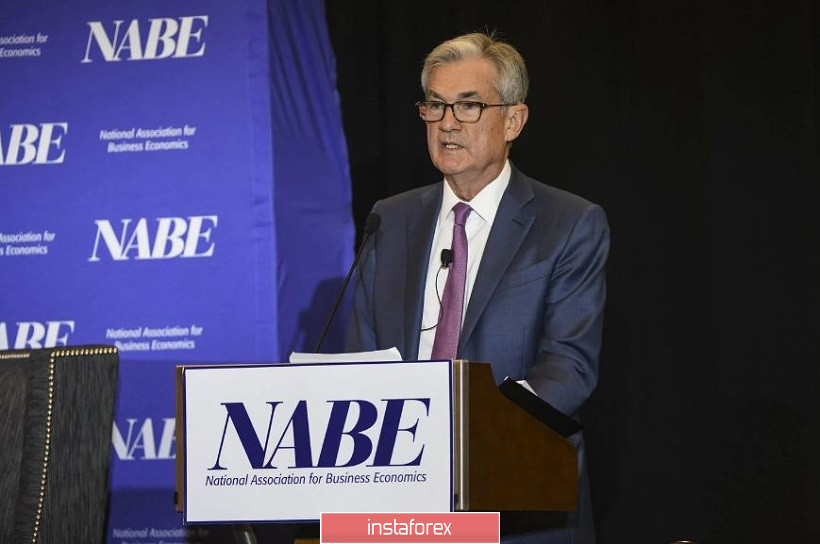The euro-dollar pair actually froze in place, ahead of trade negotiations between the US and China. Macroeconomic reports, as expected, have faded into the background, although they should not be completely discounted: if Beijing and Washington do not find a common language again, key economic parameters will be on the agenda again, complementing the overall fundamental picture. Therefore, yesterday's PPI growth data and tomorrow's US CPI growth data are still important for the EUR/USD pair in particular, and for the dollar as a whole. As soon as the passions regarding the outcome of the US-Chinese dialogue (regardless of the results) subside, statistics will be in the spotlight, especially on the eve of the next Fed meeting.
However, the dollar virtually ignored a significant decline in the US producer price index yesterday. On a monthly basis, this indicator, which is an early signal of changes in inflationary trends, unexpectedly collapsed into the negative area (for the first time since January of this year), reaching -0.3%. This is the weakest result since the fall of 2015. In annual terms, the indicator also did not significantly reach forecasts, falling to 1.4% instead of the expected growth to 1.8%.

The dollar reacted to the published figures very phlegmatically: the EUR/USD pair tested the boundaries of the 10th figure, but returned quickly to its previous position. The market is now focused on other fundamental factors, discussing rumors around the upcoming negotiation process. At the same time, weak PPI growth is another "wake-up call" for dollar bulls.
Let me remind you that the indicator of industrial activity in the United States (ISM manufacturing index) collapsed in September to a ten-year low, contrary to analysts' forecasts, who expected its growth. The volume of construction costs in August also showed a negative trend - instead of an increase of 0.5%, the indicator rose only 0.1%. Nonpharma, likewise, left a double impression: amid falling unemployment, the dynamics of growth in the number of people employed in the non-agricultural sector, as well as in the industrial sector, leaves much to be desired. Nonfarm's inflationary component — the level of average hourly wages — was especially disappointing. One of the key indicators for the Fed turned out to be zero on a monthly basis (the worst result since November 2017) and 2.9% on an annual basis (worst result since September 2018).
It is worth noting here that September inflation may also disappoint, especially considering the dynamics of PPI growth. According to the consensus forecast, total inflation should slightly increase (in annual terms) - up to 1.8%, and on a monthly basis remain at the previous values (0.1%). Core inflation, in turn, should completely repeat the trajectory of the month before last: 0.3% m / m, 2.4% y / y. For dollar bulls, it is critically important that these indicators come out at least at the forecast level: if the release is in the "red zone", the greenback will be under pressure again, especially against the background of other American macro indicators.
It is likely that tomorrow's release on inflation will be ignored by the traders of EUR/USD. Nevertheless, the post factum CPI will play an important role in the context of further prospects for the monetary policy of the Fed. Well, in the meantime, China has the leading role among all the fundamental factors. The market is oversaturated with controversial rumors about the possible outcome of trade negotiations and some events preceding the negotiations are frankly alarming. For example, it was reported yesterday that Washington had expanded the sanctions list to include 28 Chinese organizations in connection with their involvement in violating the rights of Uyghurs in Xinjiang province. The list of "black list" included government agencies and technology companies specializing in the production of video surveillance equipment.
By increasing the sanctions pressure, the White House only increased anti-risk sentiment in the foreign exchange market. This fact served as an indirect confirmation that Beijing has tightened its position in the negotiation process. According to Bloomberg, China significantly narrowed the agenda of the meeting, excluding from the list of topics discussed the reform of China's industrial policy, industrial subsidies and intellectual property. And although Finance Minister Steven Mnuchin was optimistic the other day about the upcoming negotiations, traders are "taught by bitter experience" in this regard, especially since numerous indirect signs suggest the opposite.

Thus, if American inflation falls below forecast values tomorrow and negotiations fail, the Fed will "come up" on the horizon again. On the other hand, the head of the Federal Reserve Jerome Powell said during his speech yesterday that the issue of the third rate cut "is not finally resolved." Moreover, the market is already 80% sure that the regulator will nevertheless take this step, especially if Beijing and Washington do not find a common denominator. If negotiations still fail, this probability will increase to 100%, putting significant pressure on the dollar. This state of affairs will allow the EUR/USD bulls to develop corrective growth - up to the resistance level of 1.1070 - this is the upper line of the Bollinger Bands indicator, which coincides with the lower boundary of the Kumo cloud on the daily chart.





















